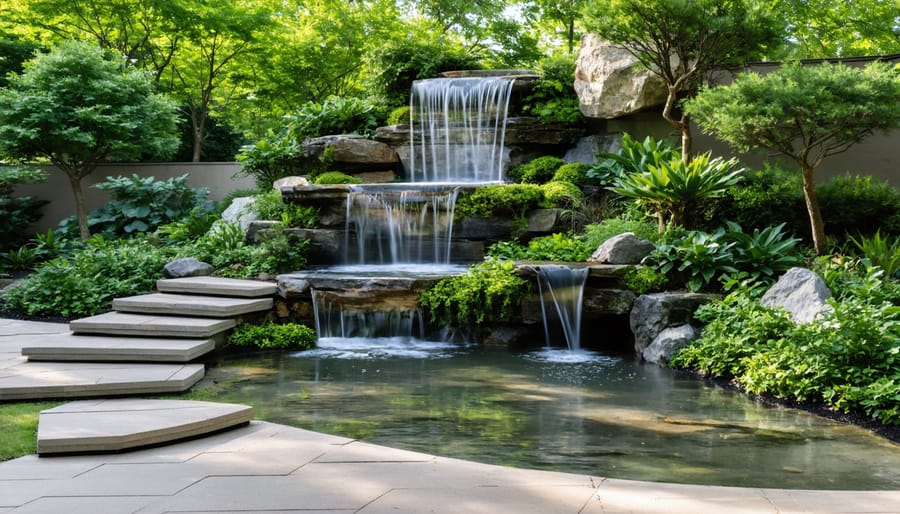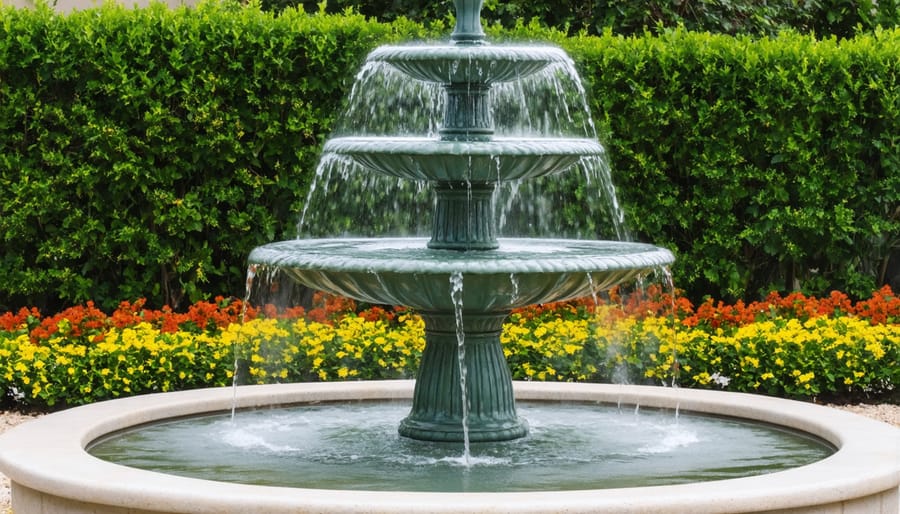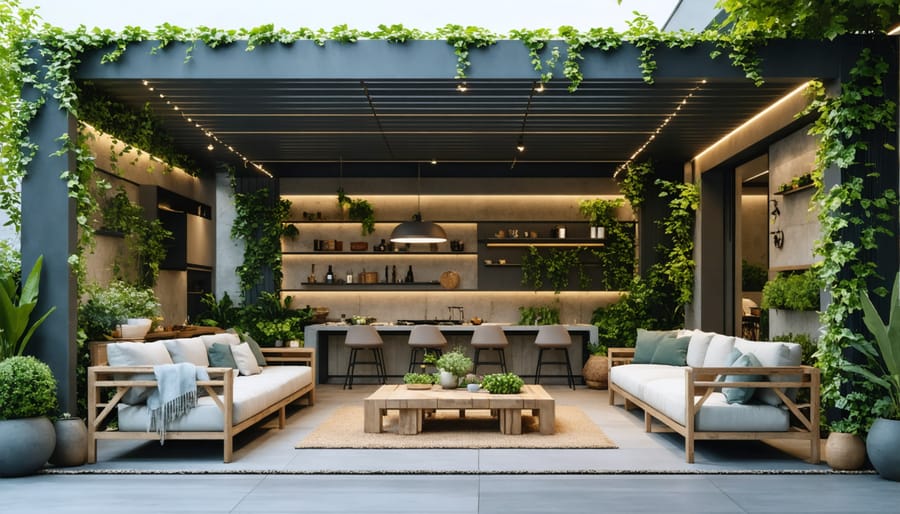Transform Your Backyard Into a Sound Sanctuary: Expert Soundscaping Techniques

Transform your outdoor space into a harmonious sanctuary through soundscaping – the art of deliberately arranging and managing environmental sounds to create a peaceful outdoor environment. This landscaping technique goes beyond visual aesthetics, focusing on the strategic placement of sound-absorbing elements, water features, and vegetation to control noise pollution and enhance natural acoustics. Whether you’re looking to mask urban disturbances, create private conversation areas, or simply enjoy the therapeutic benefits of curated outdoor sounds, soundscaping offers practical solutions for homeowners seeking to optimize their outdoor living spaces. By understanding the principles of sound movement and incorporating strategic design elements, you can effectively shape your yard’s acoustic environment while maintaining its visual appeal and functionality.
What Makes Outdoor Soundscaping Essential?
The Science of Sound in Outdoor Spaces
Sound behaves differently outdoors compared to indoor spaces, following specific principles that affect how we experience it in our gardens and outdoor living areas. When sound waves travel outside, they spread out in all directions and gradually lose energy as they move through the air. This natural dissipation is affected by various factors, including temperature, humidity, and wind conditions.
Hard surfaces like concrete, stone walls, and water features reflect sound waves, creating echoes and potentially amplifying noise. In contrast, soft surfaces like grass, plants, and soil absorb sound energy, helping to reduce noise levels. Understanding these basic principles is crucial for effective outdoor soundscaping.
Distance also plays a vital role – sound levels typically decrease by about 6 decibels each time the distance from the source doubles. This is why strategic placement of sound barriers and sound-absorbing elements is so important in outdoor spaces. Weather conditions can also dramatically impact sound travel, with wind capable of bending sound waves and temperature variations affecting how far sound carries.
For homeowners looking to manage outdoor acoustics, these scientific principles form the foundation for creating effective soundscaping solutions.

Common Backyard Noise Challenges
Homeowners frequently encounter various noise challenges that can disrupt their outdoor sanctuary. Traffic noise from nearby streets often tops the list, creating a constant background hum that can diminish the peaceful atmosphere of a garden or patio. Barking dogs in neighboring yards, while lovable, can become a source of unexpected disruption during outdoor activities or quiet evenings.
Modern suburban life brings additional sound concerns, such as air conditioning units, pool pumps, and lawn maintenance equipment. These mechanical sounds, though necessary, can create an industrial ambiance that detracts from the natural setting many homeowners desire. Construction noise from nearby development projects, while temporary, can significantly impact outdoor enjoyment for extended periods.
Social noise from neighboring properties, including conversations, music, or outdoor gatherings, can also affect the tranquility of your outdoor space. Even natural elements like wind whistling through poorly planned spaces or echoing caused by hard surfaces can create unexpected acoustic challenges. Understanding these common noise issues is the first step toward developing effective soundscaping solutions that enhance your outdoor living experience.
Natural Soundscaping Elements
Water Features and Sound Masking
Water features serve as both beautiful natural elements in your backyard and effective sound-masking solutions. Fountains, waterfalls, and cascading water features create a consistent, soothing white noise that helps neutralize unwanted sounds from traffic, neighbors, or urban activity.
When selecting a water feature, consider its size and flow rate. A small tabletop fountain might be perfect for masking quiet conversations, while a larger waterfall installation can effectively counter more substantial noise pollution. The key is matching the water feature’s sound level to your specific needs without creating additional noise concerns.
Position your water feature strategically between your relaxation area and the source of unwanted noise. The gentle splashing of water can create a peaceful atmosphere while naturally drawing attention away from disruptive sounds. For maximum effectiveness, consider incorporating multiple smaller water features rather than one large installation, creating layers of calming sounds throughout your space.
Remember to maintain proper water flow and regular cleaning to ensure your feature produces clear, pleasant sounds rather than unwanted gurgling or splashing noises.

Strategic Plant Placement
Strategic plant placement plays a vital role in effective soundscaping, combining both functionality and natural beauty. When incorporated into thoughtful outdoor space planning, vegetation can significantly reduce unwanted noise while creating soothing natural sounds.
Dense shrubs and trees act as natural sound barriers, absorbing and deflecting unwanted noise from traffic or nearby activities. Evergreen varieties like holly, juniper, and cypress are particularly effective year-round sound absorbers. Consider creating layered plantings with varying heights to maximize sound reduction.
Beyond noise reduction, strategic plant placement adds pleasant natural sounds to your environment. Tall ornamental grasses create gentle rustling sounds in the breeze, while carefully positioned trees attract songbirds. Water-loving plants near fountains or water features enhance the calming effects of flowing water.
For optimal results, plant sound-absorbing vegetation close to noise sources and along property boundaries. Remember to select plants suitable for your climate and maintain proper spacing for healthy growth. This natural approach to sound management not only improves your outdoor acoustics but also increases privacy and enhances your garden’s visual appeal.
Structural Solutions for Sound Management
Sound Barriers and Screens
Sound barriers and screens are essential elements in creating an effective soundscape for your outdoor space. Common options include solid fencing, which can reduce noise levels by 5-10 decibels, and purpose-built acoustic barriers that can achieve reductions of up to 20 decibels. Living walls and dense vegetation, while less effective than solid barriers, offer a natural aesthetic while providing modest sound reduction.
The effectiveness of barriers depends largely on their height, material density, and placement. For optimal results, barriers should be positioned as close as possible to either the noise source or the area you want to protect. Materials like concrete, brick, and specially designed acoustic panels offer superior sound-blocking properties compared to standard wooden fencing.
Consider incorporating modular screens or temporary barriers that can be adjusted based on seasonal needs or specific events. These flexible solutions allow you to create custom sound protection while maintaining the visual appeal of your outdoor space.
Pergolas and Other Sound-Dampening Structures
Pergolas and other outdoor structures serve a dual purpose in soundscaping: they provide visual appeal while creating effective sound barriers. When covered with dense climbing plants like ivy or wisteria, these structures can absorb and deflect unwanted noise from nearby streets or neighbors. Adding fabric panels or outdoor curtains to your pergola creates additional sound dampening while maintaining a stylish appearance.
Strategic placement of these structures is crucial. Position them between your primary outdoor living space and the main noise source for maximum effectiveness. Consider incorporating lattice panels or bamboo screens into your pergola design for enhanced sound reduction. These features can reduce noise levels by up to 6-8 decibels when properly installed and maintained.
For best results, combine your pergola with other soundscaping elements like water features or dense plantings. This layered approach not only maximizes noise reduction but also creates a more immersive and peaceful outdoor environment.

Soundscaping is a powerful tool that can transform your outdoor space into a more enjoyable and peaceful environment. By understanding the basic principles of sound management and implementing strategic elements like water features, plants, and barriers, you can create your own personal sanctuary. Remember that successful soundscaping doesn’t require a complete overhaul of your yard – start small with one or two elements and build from there. Whether you’re looking to mask unwanted noise or enhance pleasant sounds, the key is to plan thoughtfully and consider how different elements work together. Take the first step today by assessing your outdoor space and identifying areas where soundscaping could make the biggest impact. With some creativity and careful planning, you can design an outdoor environment that not only looks beautiful but sounds amazing too.

